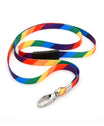The world around us can often be unpredictable, posing unexpected challenges and potential threats at every corner. As members of society, it is our shared responsibility to look after our own safety and that of our loved ones. Self-defense, the art of protecting oneself from harm, has never been more relevant, with an increasing spotlight being shed on this imperative life skill in recent years. From confronting a full-blown violent attack to simply staving off a stray dog, self-defense techniques come in handy in more situations than we can count.
More so, knowledge of self-defense instills a heightened sense of confidence, allowing us to step out of our homes without a debilitating fear of the unknown. In this guide, we delve deep into the realm of self-defense, exploring its many facets and uncovering valuable insights to aid your journey towards personal safety. Whether you're curious about the defensive use of firearms, wish to sift through self-defense statistics, or plan on enrolling in a self-defense class, we have you covered.
Hang tight as we navigate the dynamics of self-defense, emphasizing its relevance in today's world, the different methodologies, and the benefits of equipping oneself with this essential skill set. It is a journey from vulnerability to empowerment, and it starts right here. Let's unravel the secrets to personal safety together!
Statistics on Self-Defense
Self-defense, a crucial aspect of personal safety, has become a topic of considerable interest and research. Whether one lives in a bustling city or a tranquil town, knowing how to protect oneself is highly beneficial. From wielding a firearm to executed martial art moves, self-defense mechanisms vary based on an individual’s comfort and convenience. Recent statistics draw an engaging picture of self-defense in contemporary society, encapsulating interesting elements like gun usage, enrollment in self-defense classes, and the effectiveness of formal self-defense training.
Gun Usage in Self-Defense
For decades, firearms have been the go-to self-defense tool for a substantial portion of the population, with 1.67 million instances of gun usage in self-defense per year noted in a recent 2021 survey. Such data implies a significant reliance on this particular strategy, shedding light on the necessity and relevance of responsible gun ownership and usage in the United States. It signifies the need for balance between providing adequate education and training to prospective gun owners for self-defense and preventing firearms from falling into the wrong hands.
Enrollment in Self-Defense Classes
While guns continue their predominance, alternative self-defense methods are gaining momentum too, illustrated by the fact that around 65% of women in the U.S. reported enrolling in a self-defense class. This proactive approach to personal safety is inspiring, illustrating a shift from relying on external sources of protection to empowering oneself. Besides, this statistic exemplifies how self-defense is increasingly being viewed as an integral part of women's safety. The rising enrollment rate in these classes undoubtedly illustrates the gravity of the situation and highlights the requirement for more such initiatives and safety programs.
Effectiveness of Formal Self-Defense Training
The merits of formal self-defense training become all too apparent when we perceive the concrete outcomes they render. Individuals with such training are 60-80% less likely to fall victim to an attack, as cited in a study published in the Journal of Injury Prevention. This data compellingly echoes the efficacy of formal training programs, suggesting that they can be instrumental in not only empowering individuals but also in significantly mitigating the risk of violent encounters.
Undeniably, comprehensive self-defense knowledge and strategies are instrumental in modern life, evidenced by our examination of the statistics surrounding their usage and effectiveness. Prioritizing self-defense skills, whether that be through learning how to properly use a firearm or mastering martial arts techniques, can be a significant step towards ensuring personal safety and bolstering confidence. For any woman contemplating boosting her defense strategies and confidence, they might find our Better Women's Safety Tips particularly insightful and helpful. This increased awareness and proactive effort can surely open the doors to a safer and more empowered society.
Defensive Use of Firearms
Through a turbulent sea of discussions on gun rights, a topic that often surfaces is the defensive use of firearms. This refers to the instances where the mere presence of a firearm has deterred a would-be perpetrator or halted a dangerous situation. It's not merely a hypothetical; statistically speaking, firearms have been used defensively in a significant number of cases.
Between 2014 and 2018, firearms were brought into play to thwart nonfatal violent crimes in a reported 166,900 instances. That's not just a number, but a testament to the real lives potentially saved or at least reassured of their safety. However, the numbers can seem equally daunting when viewing them from another perspective.
In 2020 alone, as many as 1,453 incidents resulted in defensive gun use deaths. A stark figure, it leads one to reconsider the conventional wisdom about safety with firearms. A gun can act as a protector, but its use, defensive or otherwise, needs to be managed responsibly.
The crucial takeaway here is that precautionary measures with the understanding and handling of firearms can minimize unfortunate accidents. It's the responsibility of firearm owners to ensure their weapon serves its intended purpose - providing safety - without resulting in unintended consequences.
At the core, the debate on firearms isn't a struggle between the right to bear arms and the desire for a safer community; it's a plea for responsible ownership and usage. The defensive use of firearms is a topic worthy of our attention, as it holds intrinsic value in the larger conversation about safety, protection, and personal freedom.
Self-Defense and Gun Usage
As you navigate your way through the complex and contentious world of firearms and their role in society, one term you'll undoubtedly encounter quite often is 'self-defense.' It's a concept that has been central to the gun ownership debate, but it's also one that's often surrounded by a cloud of misinformation and misunderstanding.
In real-life scenarios, American gun owners reportedly use firearms for their own defense approximately 1.7 million times annually, according to the largest and most comprehensive survey of American gun owners. Yet, a staggering disparity in these figures exists. Data derived from the National Crime Victimization Survey (NCVS) present a significantly reduced estimated number of instances where guns were used for self-defense: around 60,000 to 120,000 times per year.
So, what might account for such a massive discrepancy between these two datasets? Well, measuring self-defense gun usage can be fraught with challenges, leading to these wildly divergent projections. It's important to differentiate between defensive gun use claims and verified cases. Factors such as over-reporting and definitional inconsistencies can dramatically inflate these statistics, and often, the truth is found in studying the details.
Among the range of data surrounding firearms, it becomes clear that, yes, guns are indeed used for defensive purposes. However, the frequency of such instances is a more nuanced issue. A fair examination of the information suggests that while self-defense gun use isn't non-existent, it's also not as prevalent as some would lead you to believe.
In understanding the part that firearms play in self-defense, accuracy counts, as any misinterpretation could have serious societal implications. Arming oneself with comprehensive, well-researched data is the first line of defense in making informed decisions surrounding gun usage and self-defense.
We must tread carefully when interpreting the statistic regarding defensive gun uses, recognizing that numbers alone can often miss the heart of the matter. It's not merely about how frequently guns are used in self-defense, but the circumstances surrounding such use, the outcomes, and the potential alternatives that could aid in reducing violent confrontations.
Going forth, let's pledge to approach this topic with an open mind, a compassionate heart, and a critical eye. Because in dealing with an issue as volatile and sensitive as this, it's not only adaptive laws and reassessments that we need but empathy, understanding, and respectful dialogue too.
Benefits of Learning Self-Defense
Navigating daily life involves many challenges, and the journey becomes even more complex when threats to personal safety loom. But take heart, because acquiring skills in self-defense can dramatically bolster your ability to protect not just yourself, but also those around you. The crux of self-defense training, in essence, is not only about battling external dangers but also fostering an internal sense of power and self-assuredness.
Personal Safety
Your own personal safety is of the utmost importance, and one key way of strengthening this is through learning self-defense techniques. These techniques provide more than just the physical skills needed to fend off an attacker. Learning self-defense is also about creating mental strength, staying vigilant, and heightening awareness of surroundings. This learning process installs a confidence that extends beyond merely reacting to threatening situations, but rather equips you with the preventative measures to avoid these circumstances in the first place. It's all about asserting control and taking back the reins over your personal safety.
Strangely enough, the more proficient you become in self-defense techniques, the less likely you are to ever even need to use them. This sounds paradoxical, but it's an element of truth often overlooked. Walking with an assertive stride and carrying oneself with the confidence that comes from knowing how to defend one's self effectively can often deter potential danger. That's the power of self-defense techniques for personal safety.
Protecting Others
But the benefits of learning self-defense go beyond personal safety. Acquiring these skills not only serves you, but it can also be incredibly beneficial to those around you. This rings especially true in situations where you may be in the company of loved ones, friends, or even just bystanders who might be at risk. Your self-defense skills can make the difference between a situation escalating or being diffused.
Furthermore, being able to confidently demonstrate some self-defense techniques may inspire those around you to take up training on their own. Just imagine a world where every individual is equipped with the knowledge of self-defense - not for aggression, but for protection and peace of mind. The ripple effect of your learning could extend far wider than you ever envisaged.
As we have explored, the value of learning self-defense extends beyond the individual. These techniques are not just tools but lifeskills that are pivotal to personal safety and the protection of others, reinforcing the power of individual strength and collective safety. The importance of this realization cannot be overstated, offering a pathway to journey through life with a sense of control and the assurance that you're ready to face whatever comes your way.
For those starting that journey, here's a great read on Self-Defense Techniques for Personal Safety, which delves deeper into useful tactics and methods. Whether you are a novice or seasoned in self-defense training, the knowledge you acquire proves invaluable time and again. So why wait? The journey to feeling empowered, confident, and safe starts today with self-defense training!
Conclusion
Did you know that the power of self-defense isn't solely vested in physical strength or martial prowess? Indeed, it lies within the everyday, minute choices we make, the habits we embody, and the tools we use, all geared towards ensuring personal safety. Brands like Empowered by Ashley understand this inherently. Their diverse product range thoughtfully meets the needs of individuals and pet owners who strive to live safer, more confident, and more empowered lives.
While learning self-defense techniques and understanding when and how to use tools like firearms for personal safety can be incredibly empowering, these aren't the only measures you can adopt. Something as simple and chic as Empowered by Ashley's drink cover scrunchies can protect you from potential harm. Remember, personal safety is all-encompassing and extends beyond immediate physical threats to also include situations where you may ingest substances against your will.
Similarly, ensuring the well-being of pets—a concern close to many of our hearts—is another aspect of Empowered by Ashley’s brand vision. A range of innovative and practical products cater to this need, helping us protect our beloved furry friends from anxiety and potential harm.
Striving to create an empowered and safe life for ourselves and our loved ones is a journey. Through knowledge, training, and the right tools, we grow and learn to protect what we cherish. Whether it's through personal alarms, drink cover scrunchies, or pet-safety products, Empowered by Ashley is here to help us in that journey.
Frequently Asked Questions
-
Why is self-defense important?
Self-defense is important for personal safety as it empowers individuals to protect themselves from potential threats, enhances confidence and awareness, and provides a sense of security in various situations.
-
What are some basic self-defense techniques?
Basic self-defense techniques include learning to be aware of your surroundings, maintaining good posture and body language, practicing assertiveness and boundary setting, and mastering basic striking and blocking moves.
-
Can self-defense be learned by anyone?
Yes, self-defense techniques can be learned and practiced by anyone, regardless of age, gender, or physical abilities. Training and practice can greatly improve one's ability to protect themselves.
-
Is it better to run away or fight back in a self-defense situation?
In most cases, it is recommended to prioritize escaping or running away from a potentially dangerous situation. However, if escape is not possible or immediate danger is involved, fighting back using self-defense techniques can be a viable option.
-
Where can I learn self-defense techniques?
There are various options to learn self-defense techniques, including local self-defense classes, martial arts schools, online tutorials, and workshops conducted by self-defense experts. It is recommended to choose a reputable source and find a method that suits your preferences and needs.
















Leave a comment
This site is protected by hCaptcha and the hCaptcha Privacy Policy and Terms of Service apply.